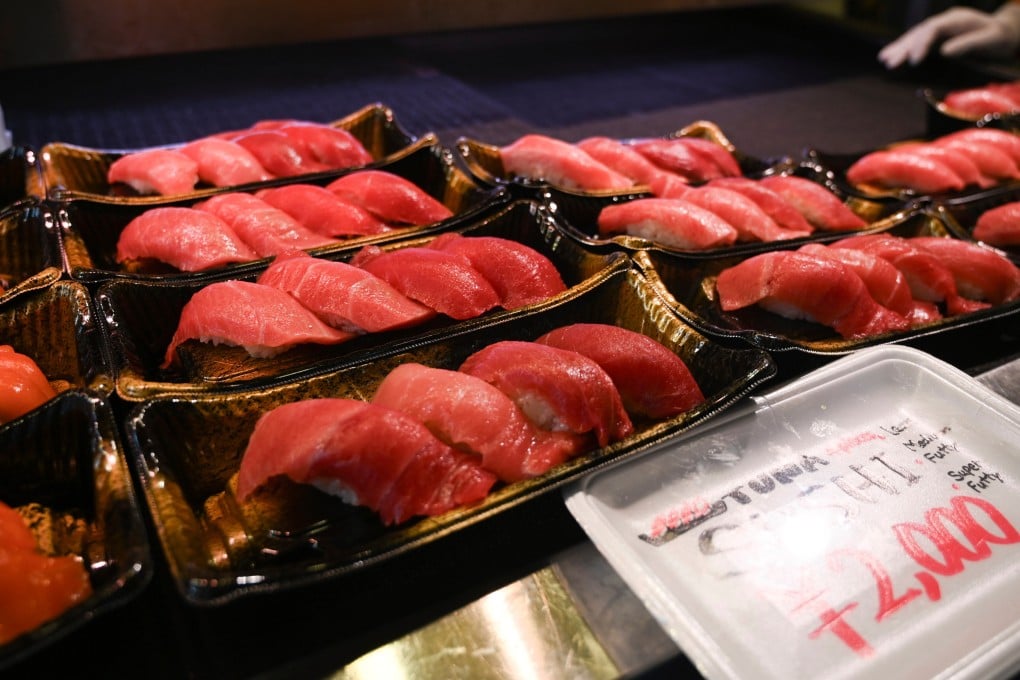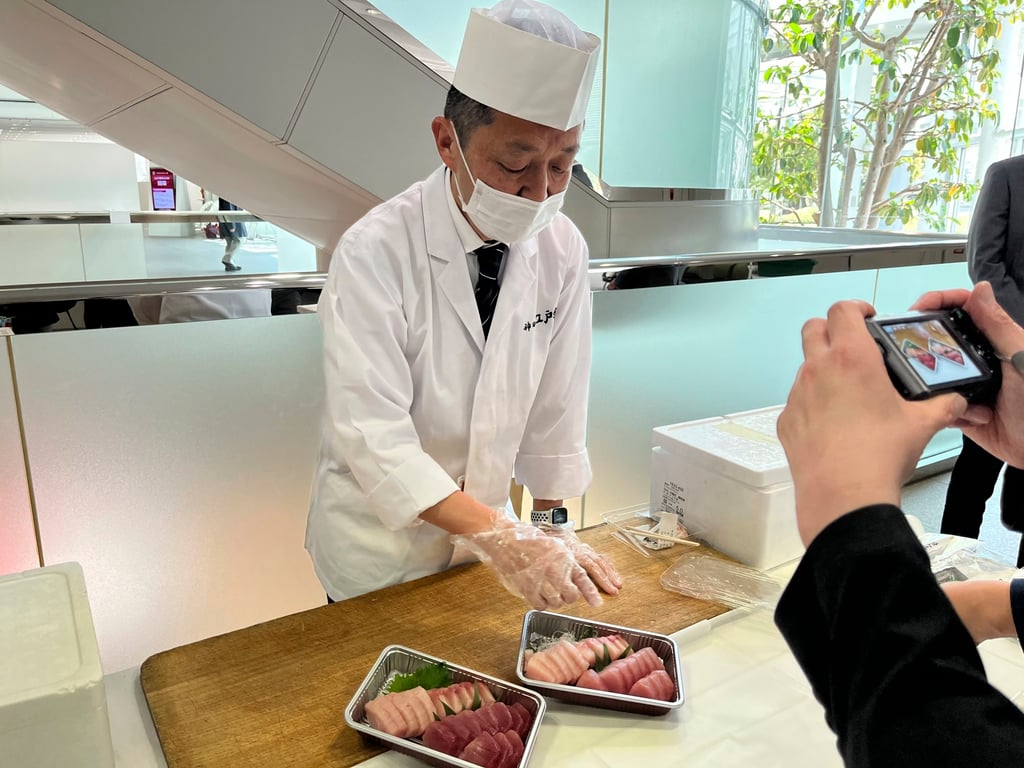How fatty is your tuna? New Japanese machine uses ultrasound to find out
The Sonofai machine, based on Fujitsu’s AI technology, makes judging the quality of tuna for sushi and sashimi quicker, safer and easier

Seafood lovers know the fatty marbling is what makes tuna sashimi and sushi so tasty. So for the industry, it is the fish’s level of fattiness that is used to judge its quality and pricing.
Usually, several people assess how fatty a tuna is by cutting the tail with a giant saw-like knife, an operation that takes about 60 seconds per fish.
But now a machine called Sonofai uses ultrasound waves to do the job in 12 seconds, operated by a person without prior knowledge of how to carve fish.
Fujitsu, the Japanese company behind the technology, recently gave a demonstration of Sonofai, a word blended from “sono” referring to “sound”, “f” for Fujitsu and “ai” for artificial intelligence. The name refers to its components but also stands for “son of AI”.

A conveyor belt transports a whole frozen tuna fish, about a metre (3ft) in size, into a machine that beams ultrasound waves.
Sensors pick up the waves to draw a zigzagging diagram on a screen to indicate the fish’s fattiness.